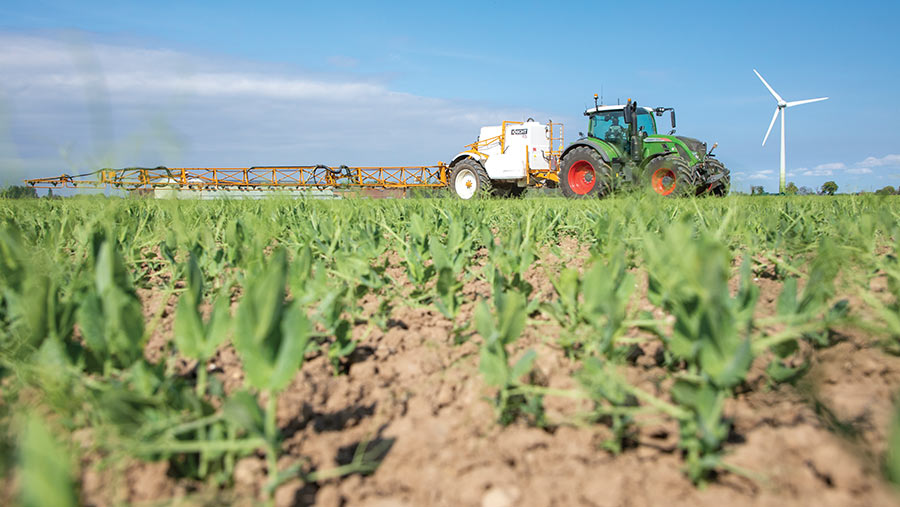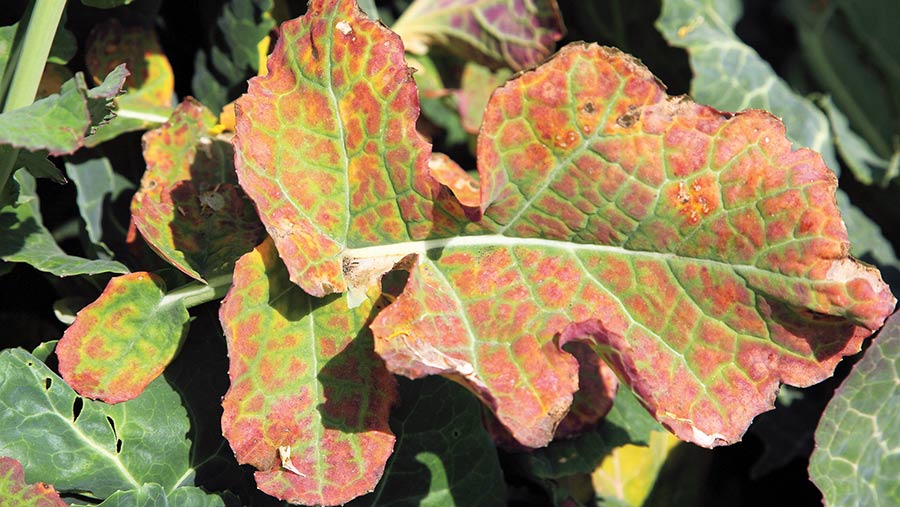Pea crop yields being lost to previously undetected virus
 © GNP
© GNP Virus disease levels are rising in a range of crops, and a recent research project has found that asymptomatic infection by a virus previously not associated with peas is causing heavy yield losses.
In the past, diagnostics for plant viruses have been targeted with tests designed to confirm the presence or absence of a specific pathogen.
New diagnostic methods such as high-throughput DNA sequencing allow researchers to identify all the genetic material in a plant tissue sample. With some complex data analysis, this can then be categorised into a raft of individual viruses.
See also: PGRO adds 11 new pea and bean varieties to 2024 list
Speaking at last month’s Association of Independent Crop Consultants (AICC) annual conference, Dr Adrian Fox, lead virologist at Fera, said this new technology was posing the crop production industry some significant challenges.
It was so effective, he said, that his team was discovering plant viruses at such a rate that they couldn’t keep up with the task of categorising them.
“We don’t know which of these newly discovered viruses are a risk to agriculture, horticulture or the environment, or whether any have been present for a long time without an issue and it’s just the first time we’ve found them,” he added.
The sheer number of discoveries prompted him to call for a review of viruses affecting UK arable crops to update answers to questions such as: which viruses are present, what is their pathogenicity, and are they are being harboured by other secondary plant hosts?
Looking for answers
This led to a recent project, carried out by Fera, PGRO and the AHDB, which tested a methodology to answer these questions crop by crop, starting with peas.
Our knowledge of viruses in peas dates back to before 1960, but there is limited recent information. The virus that has always caused most concern is pea enation mosaic virus 1 (PEMV-1), and it is thought to be transmitted by the aphid vector along with PEMV-2.
These two viruses are transmitted persistently by a narrow range of aphids, including the pea aphid and the peach-potato aphid, Myzus persicae.
Persistent transmission means the vector carries and spreads the virus for the duration of its life, and infection of a host plant takes a minimum of 10 to 20 minutes.
There is also pea seed-borne mosaic virus (PSbMV) which is spread by non-persistent aphid transmission as well as being seed-borne, meaning it can be well controlled through seed testing.
The project wanted to find out if there were other viruses being harboured by pea crops, and to do so, PGRO sampled 20 pea fields across the UK each year for the duration of the three-year project.
In each field, a 100x100m sampling grid was used, which enabled repeatability. A sample was taken at each grid intersection, and all the material sent to Fera’s labs at York for analysis.
Plants were not sampled individually. Instead, leaves from each of the 120 plants were stacked on top of one another and a punch used to combine a piece of each into one sample.
It was then analysed, and everything found in the sample DNA sequenced to give a list of viruses the researchers should be testing for.
“The team then took the same plants and split them into smaller bulks so they could go back with targeted PCR testing once they knew what to look for,” explained Adrian.
“The PCR testing could then work out what the prevalence of each of those viruses was in each bulk.”

Turnip yellows virus damage on OSR © Blackthorn Arable
Surprising discovery
As might be expected, the analysis found PEMV-1, PEMV-2 and PSbMV in several crops across the UK at varying levels.
But the surprising discovery was that the most common virus found was turnip yellows virus (TuYV) – which previously had never been documented in peas in the UK.
“It was also present at a higher incidence than any other virus the team looked for. In year three, it was present in every single field,” noted Adrian.
It has not previously been documented because the disease it causes is asymptomatic in pea leaves and until the adoption of the high-throughput analysis techniques, no one had looked for it.
TuYV is known to have a huge host range including brassicas, legumes (including clover) and cucurbits (squash and pumpkins) and is persistently transmitted by a wide range of vectors, the key one being the peach-potato aphid.
Along with the discovery in UK crops, it has also now been reported in peas in Australia and Germany.
Significant yield loss
When Adrian’s team looked into the impact of TuYV in peas, they found that losses were much more severe than from PEMV-1 infection, potentially hitting yield by 40%.
He says the good news is that treatment with an insecticide can reduce that by about half, although 20% of yield is still a significant and uneconomic loss to bear.
“It leads to the question: what do you treat with and when? The answer is that we haven’t got to that part of the research yet,” he says.
“But from work in carrots and knowing what we know about plant physiology, plants become much more resistant, or tolerate virus better, later on. So if you treat early, you’re more likely to protect yield.”
He adds that more needs to be done to quantify reservoirs of infection in cover crops and wildflower and stewardship margins, with known TuYV host species commonly found in seed mixtures.
These areas could also be providing overwinter habitat for aphid vectors around cropped areas, increasing virus transmission risk in the spring.
AICC’s Marion Self, an agronomist working across Suffolk, welcomes the improvement in the understanding of viruses affecting pea crops and quantification of the damage they can do.
She says yields have been depressed over recent seasons and, as a general trend, on-farm crop performance isn’t jumping forward as many would hope.
“The levels of TuYV found in peas could be part of the reason why we haven’t seen that progression, with a reduction in insecticide use potentially playing its part,” she says.
“Now we know more about its prevalence, the industry can develop new and improved integrated pest management measures to tackle the problem.
“It’s very important we safeguard the future of peas and beans, as other true break crop options are so limited,” she adds.

